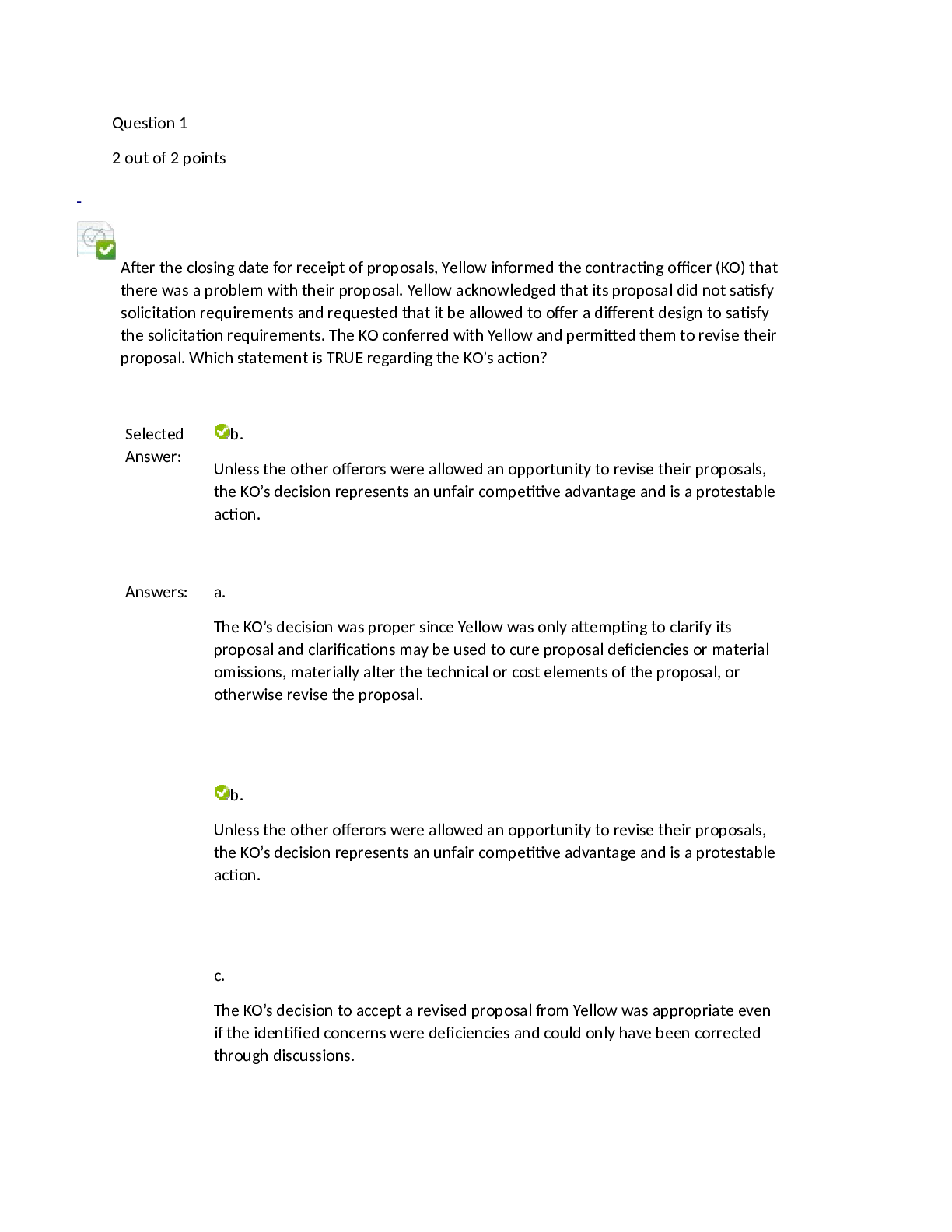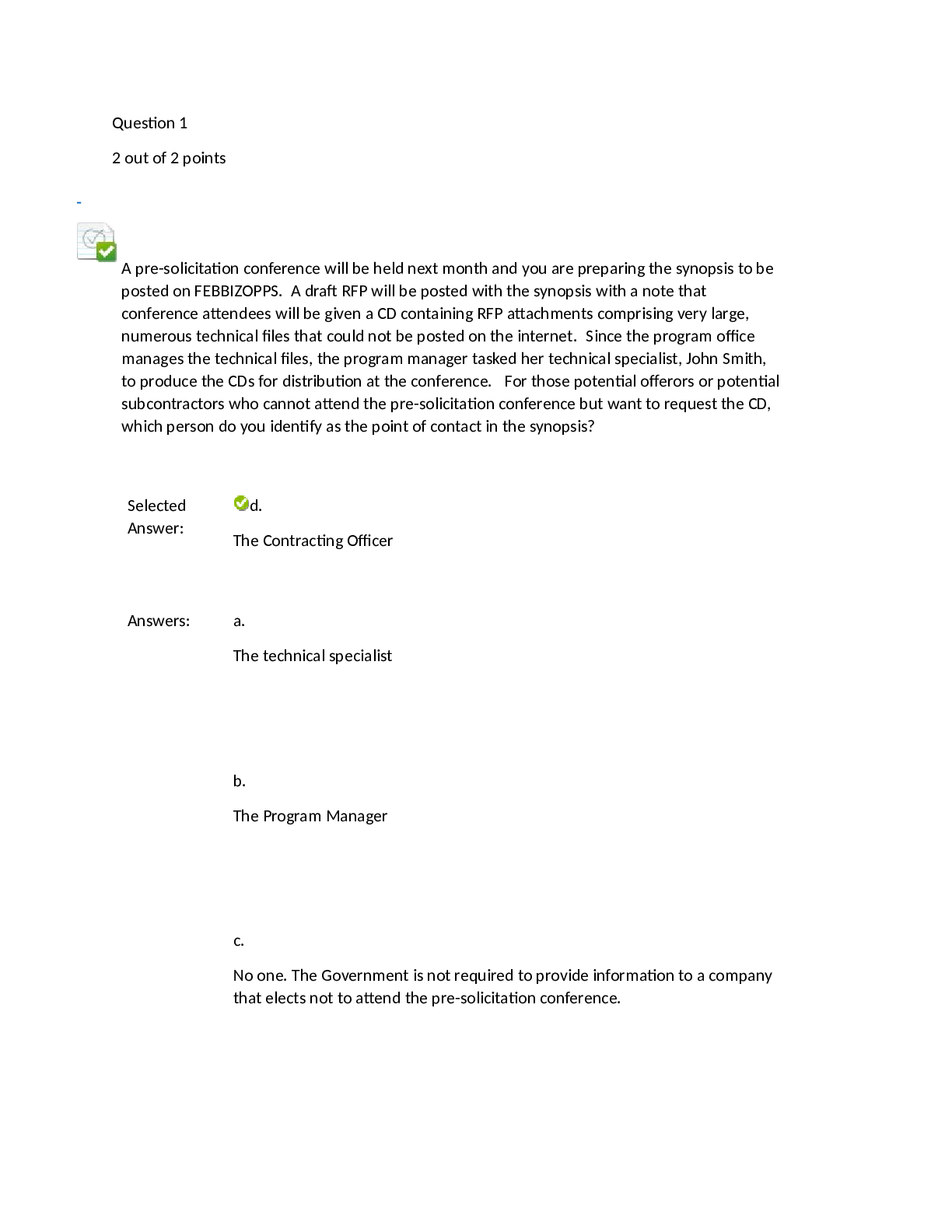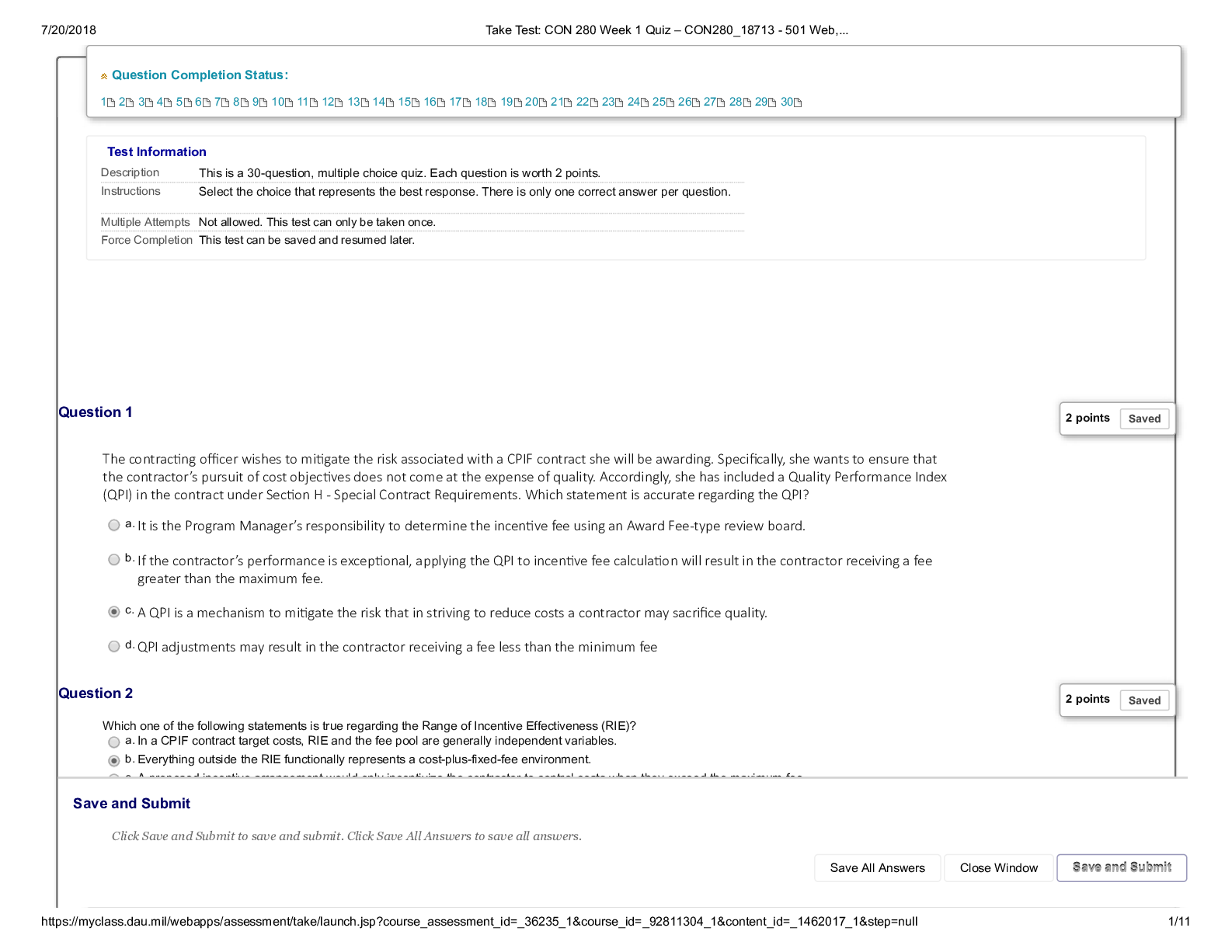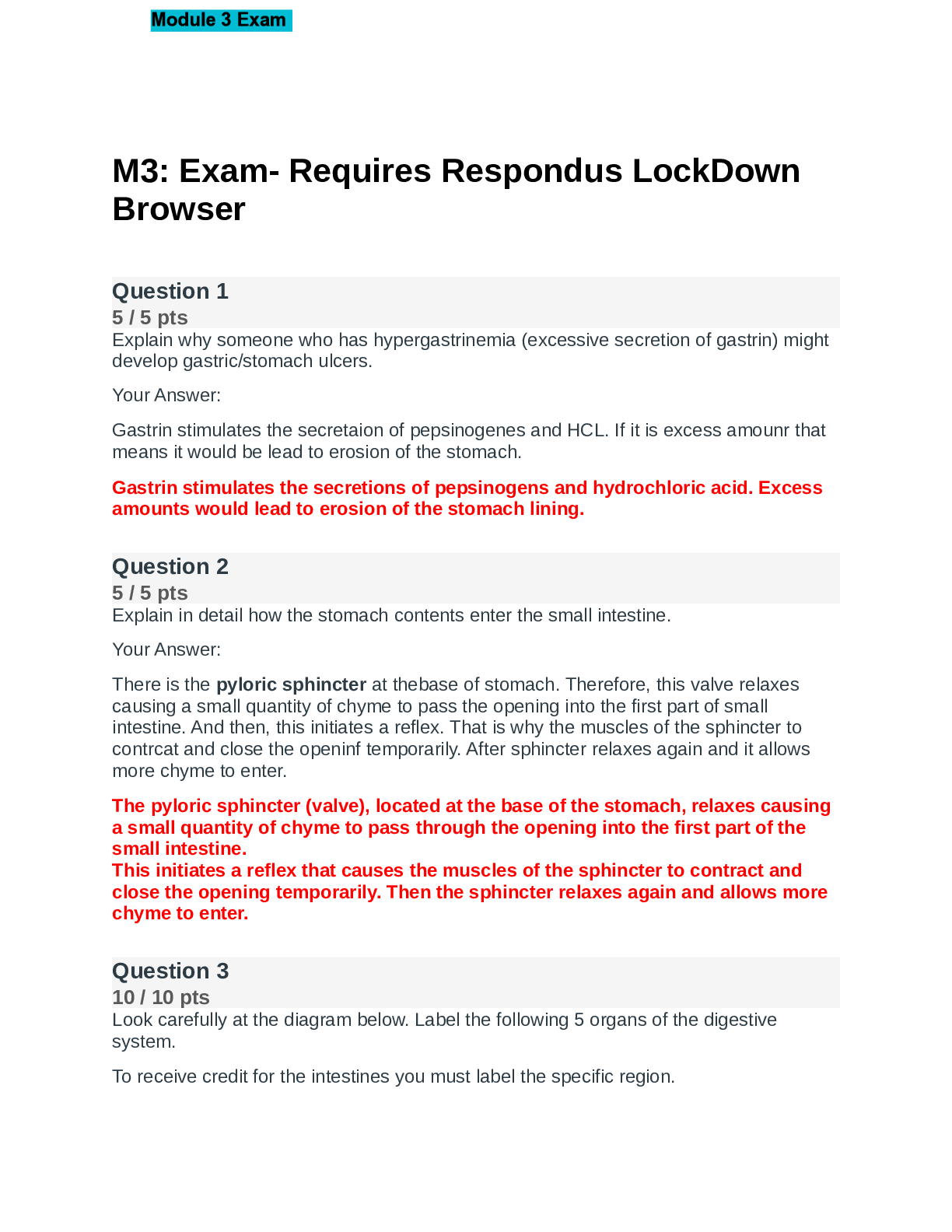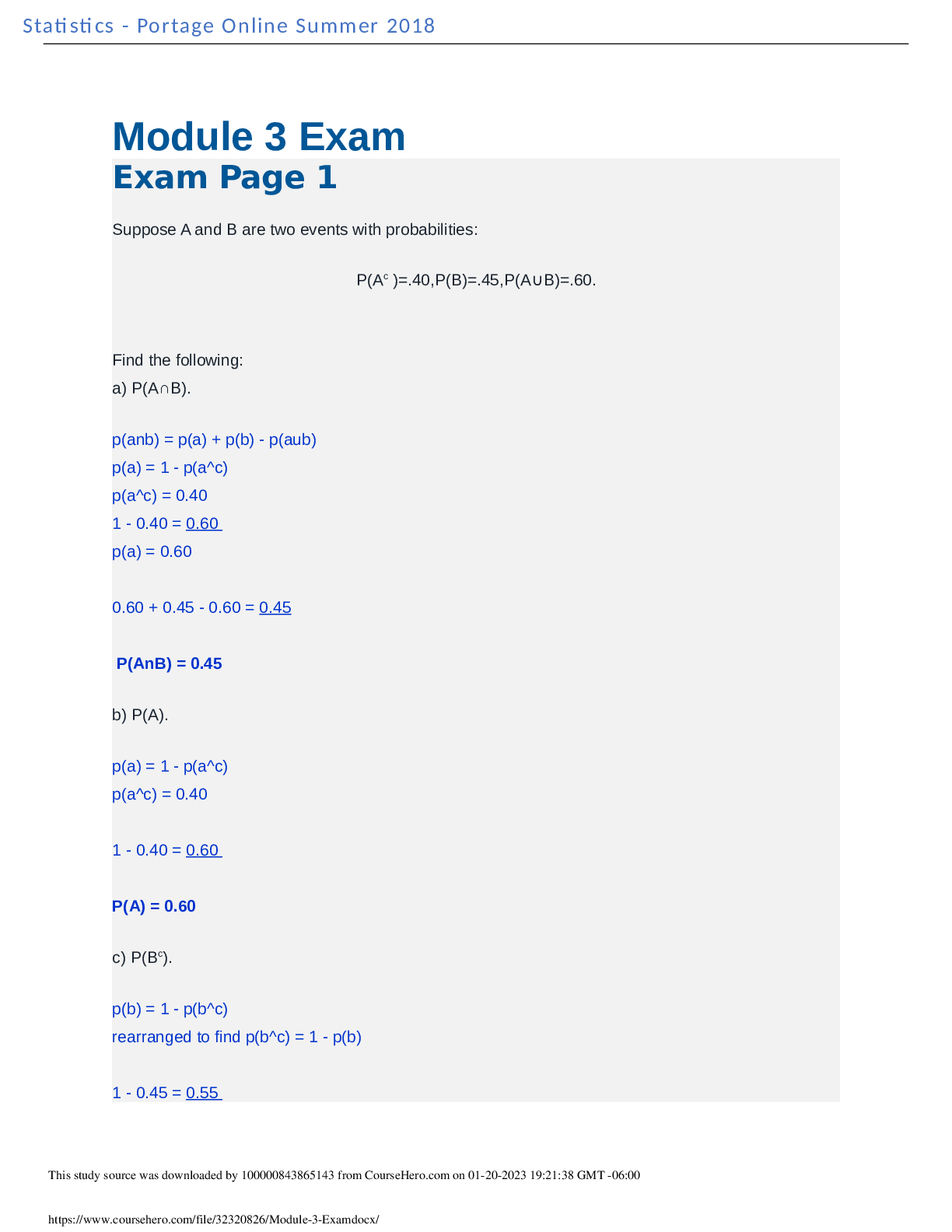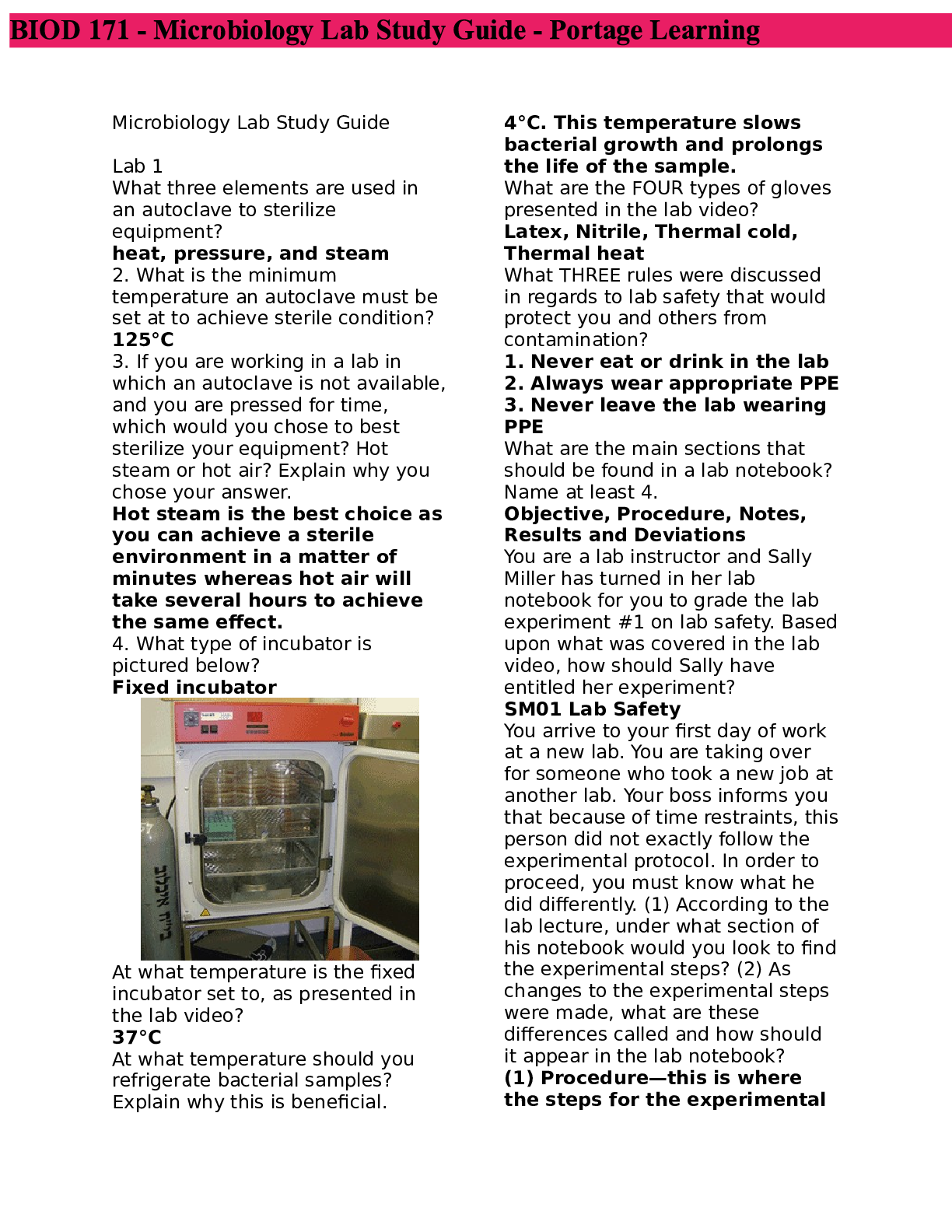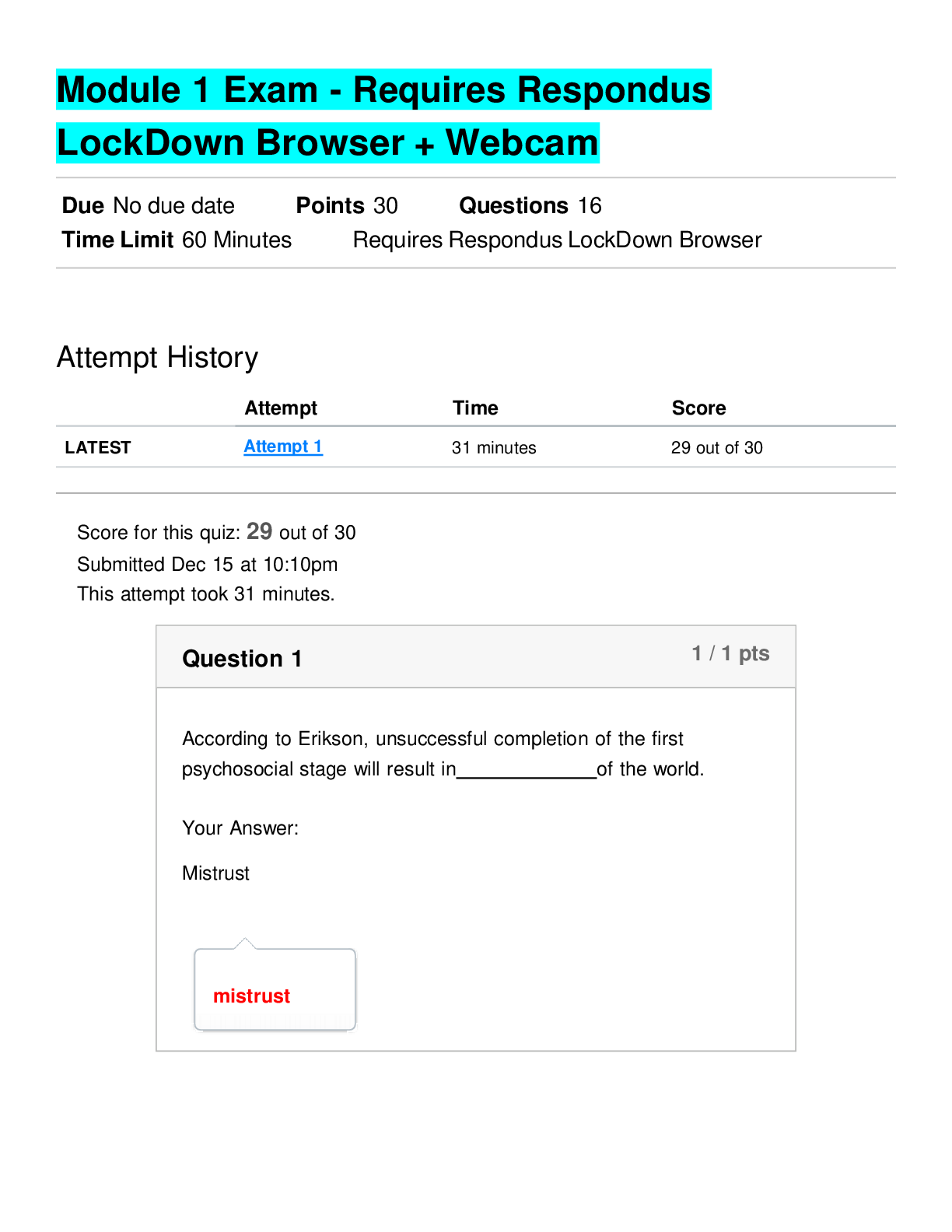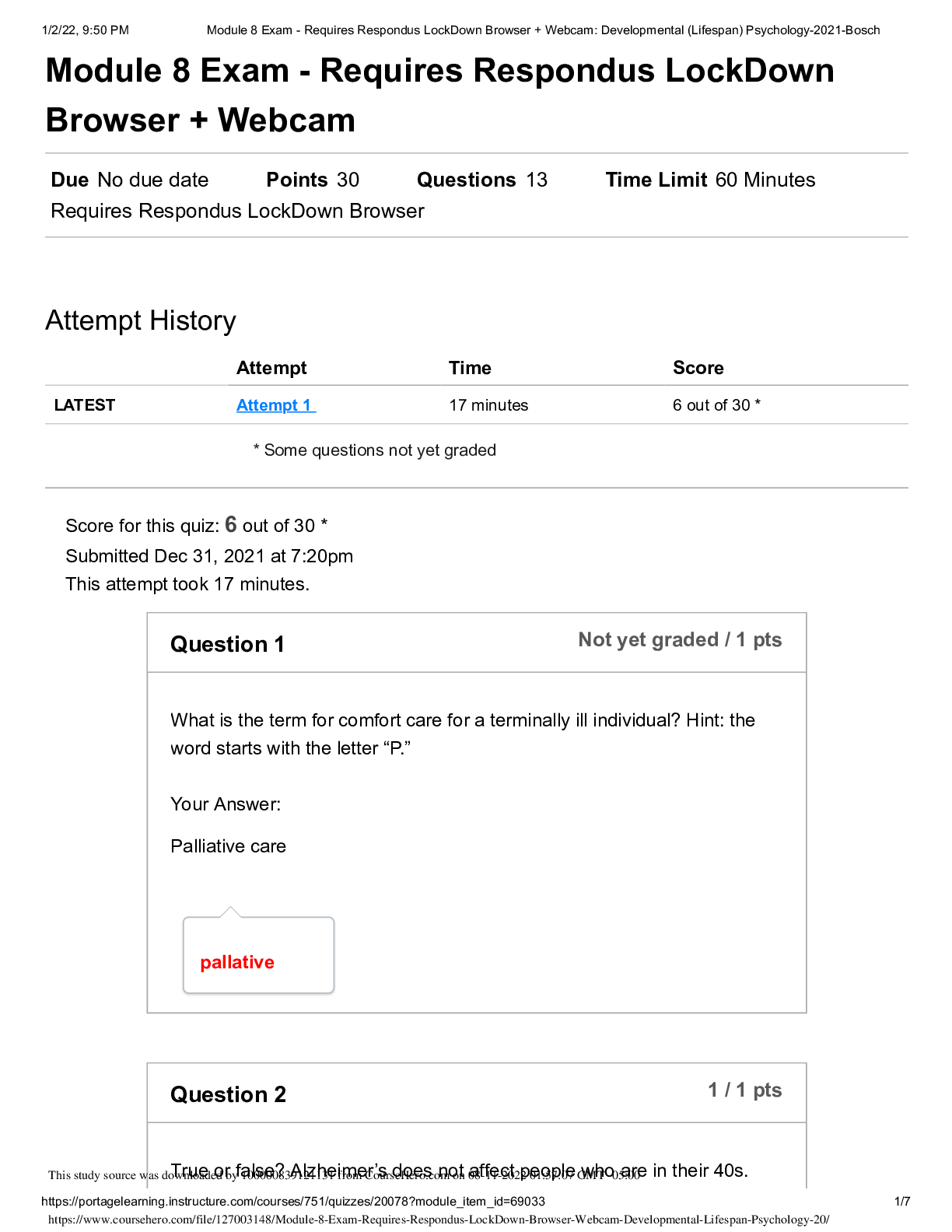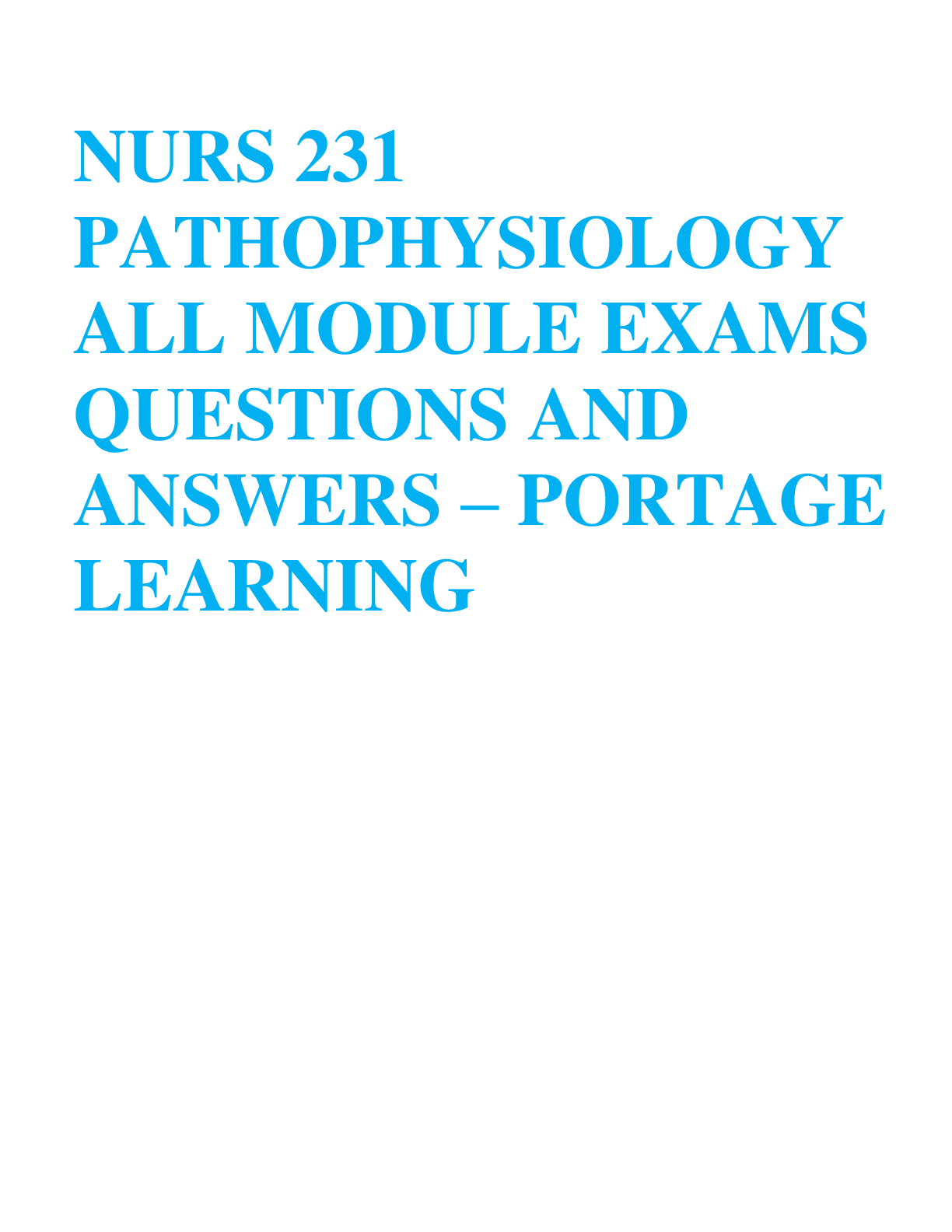Pathophysiology > EXAM > NURS 231 Pathophysiology Exam Reviews - Portage Learning - Latest Update. (All)
NURS 231 Pathophysiology Exam Reviews - Portage Learning - Latest Update.
Document Content and Description Below
Path 231 exams reviews Exam 1 Question 1 2.5 / 2.5 pts True/False: Persistent metaplasia can lead to dysplasia. Correct! True False Question 2 0 / 2.5 pts True/False: Barrett esophagus is ... an example of dysplasia. You Answered True Correct Answer False Question 3 2.5 / 2.5 pts True/False: Cervical intraepithelial neoplasia is a type of dysplasia. Correct! True False Question 4 0 / 2.5 pts True/False: Endometrial hyperplasia is a normal physiologic occurrence. You Answered True Correct Answer False Question 5 10 / 10 pts Match the following: 1. Proportion of people with a disease who are positive for that disease a. Validity 2. How likely the same result will occur if repeated b. Reliability 3. How a tool measures what it is intended to measure c. Sensitivity 4. People without the disease who are negative on a given test d. Specificity Correct! Proportion of people with a disease who are positive for that disease c. Sensitivity Correct! How likely the same result will occur if repeated Correct! How a tool measures what it is intended to measure Correct! People without the disease who are negative on a given test Question 6 1.25 / 2.5 pts Multiple Choice Which are true of the mitochondria? Select all that apply. Correct! It is involved in cellular respiration You Answered They are found far from the site of energy consumption Correct! They play a role in apoptosis They control free radicals Question 7 1.25 / 2.5 pts Which of the following are true regarding cell communication? Select all that apply. b. Reliability a. Validity d. Specificity You Answered Paracrine signaling depends on hormones Correct! Neurotransmitters act through synapses Enzyme linked receptors act through an on-off switch Correct! Autocrine signaling releases a chemical into the extracellular fluid that affects its own activity Question 8 2.5 / 2.5 pts Multiple Choice Which of the following are false of the cell? Proteins carry out the functions of the cell membrane. Lysosomes are the digestive system of the cell. Correct! The rough ER is the site for lipid synthesis. Microfilaments are thin, threadlike cytoplasmic structures. Question 9 2.5 / 2.5 pts Which is true of the cytoskeleton? Select all that apply. Correct! It controls shape and movement Correct! Cilia and flagella are microtubule-filled cellular extensions It includes peroxisomes and proteasomes Question 10 1.88 / 2.5 pts What factors are used by epidemiologic methods? Select all that apply. Correct! How disease is spread Correct! How to control disease Correct! How to prevent disease Correct! How to eliminate disease You Answered How to treat disease All of the above None of the above Question 11 2.5 / 2.5 pts Multiple Choice A patient complains of a sore throat and headache. What are these examples of? Signs Correct! Symptoms Both A & B Question 12 0 / 2.5 pts Multiple Choice Which of the following is NOT helpful to the clinician to make a diagnosis? You Answered Detailed history Physical exam Correct Answer Evidence based practice Laboratory tests Question 13 0 / 2.5 pts Multiple Choice Chemical agents (poison, alcohol) are examples of which of the following? You Answered Risk factors Clinical manifestations Pathogenesis Correct Answer Etiologic factors Question 14 10 / 10 pts Define primary prevention and give an example: Your Answer: when the risk factors has to be remove to stop the disease from occurring example-eathing healthy / exercising to stay in shape or prevent heart disease.Giving vaccination to pervent disease in children The goal of primary prevention is to remove risk factors to prevent disease from occurring. Examples include taking folic acid while pregnant to prevent neural tube defects, vaccinating children to prevent communicable disease, eating healthy and exercising to prevent heart disease, and wearing seatbelts or helmets. Question 15 10 / 10 pts Explain apoptosis and why it is necessary: Your Answer: apoptosis is the programmed of cell death.this process is necessary for cell dividing because it is removing unwanted cells to make way for new cell. Apoptosis is programmed cell death. This process eliminates cells that are worn out, have been produced in excess, have developed improperly, or have genetic damage. Apoptosis is also responsible for several normal physiologic processes, like replacing cell in the intestinal villi and removing aging red blood cells. Question 16 10 / 10 pts Explain what necrosis is and give an example and description of one type of necrosis. Your Answer: necrosis is when cell dies in an organ/tissues that is still alive .this process can interferes with the tissue regeneration and how cell can be replace. one type of necrosis is gengrenouse necrosis which can bowel or the lower extremities that may causes changes in tussue and it functions Necrosis refers to cell death in an organ or tissues that is still part of a living person. It often interferes with cell replacement and tissue regeneration. Coagulative necrosis results most often from a sudden cutoff of blood supply to an organ (ischemia), particularly the heart and kidney. Liquefactive necrosis occurs when some of the cells die but their catalytic enzymes are not destroyed. It is commonly seen with brain infarcts or abscesses. Caseous necrosis occurs as part of granulomatous inflammation and is most often associated with tuberculosis. Gangrenous necrosis most often affects the lower extremities or bowel and is secondary to vascular occlusion. The term gangrene is applied when a considerable mass of tissue undergoes necrosis. In dry gangrene the affected tissue becomes dry and shrinks, the skin wrinkles, and its color changes to dark brown or black. The spread of dry gangrene is slow. It results from a cut off in arterial blood supply and is a form of coagulation necrosis. In wet gangrene, the affected area is cold, swollen, and pulseless. The skin is moist, black, and under tension. Blebs form on the surface, liquefaction occurs, and a foul odor is caused by bacterial action. The spread of tissue damage is rapid. Question 17 9 / 10 pts Match the type of cell injury to the cause. Some answers may be used more than once. (1 point each) 1. Sunburn a. Physical agents 2. Obesity b. Radiation injury 3. Reactive oxygen species c. Chemical injury 4. Low oxygen to tissues d. Biologic agents 5. Fractures e. Nutritional imbalances 6. OTC drugs f. Free radical injury 7. Hypothermia g. Hypoxic cell injury 8. Radiation treatment 9. Lead toxicity 10. Bacteria Correct! Sunburn Correct! Obesity You Answered Reactive oxygen species Correct Answer f. Free radical injury Correct! Low oxygen to tissues Correct! Fractures Correct! OTC drugs Correct! Hypothermia Correct! b. Radiation injury e. Nutritional imbalances c. Chemical injury g. Hypoxic cell injury a. Physical agents c. Chemical injury a. Physical agents [Show More]
Last updated: 1 year ago
Preview 1 out of 109 pages
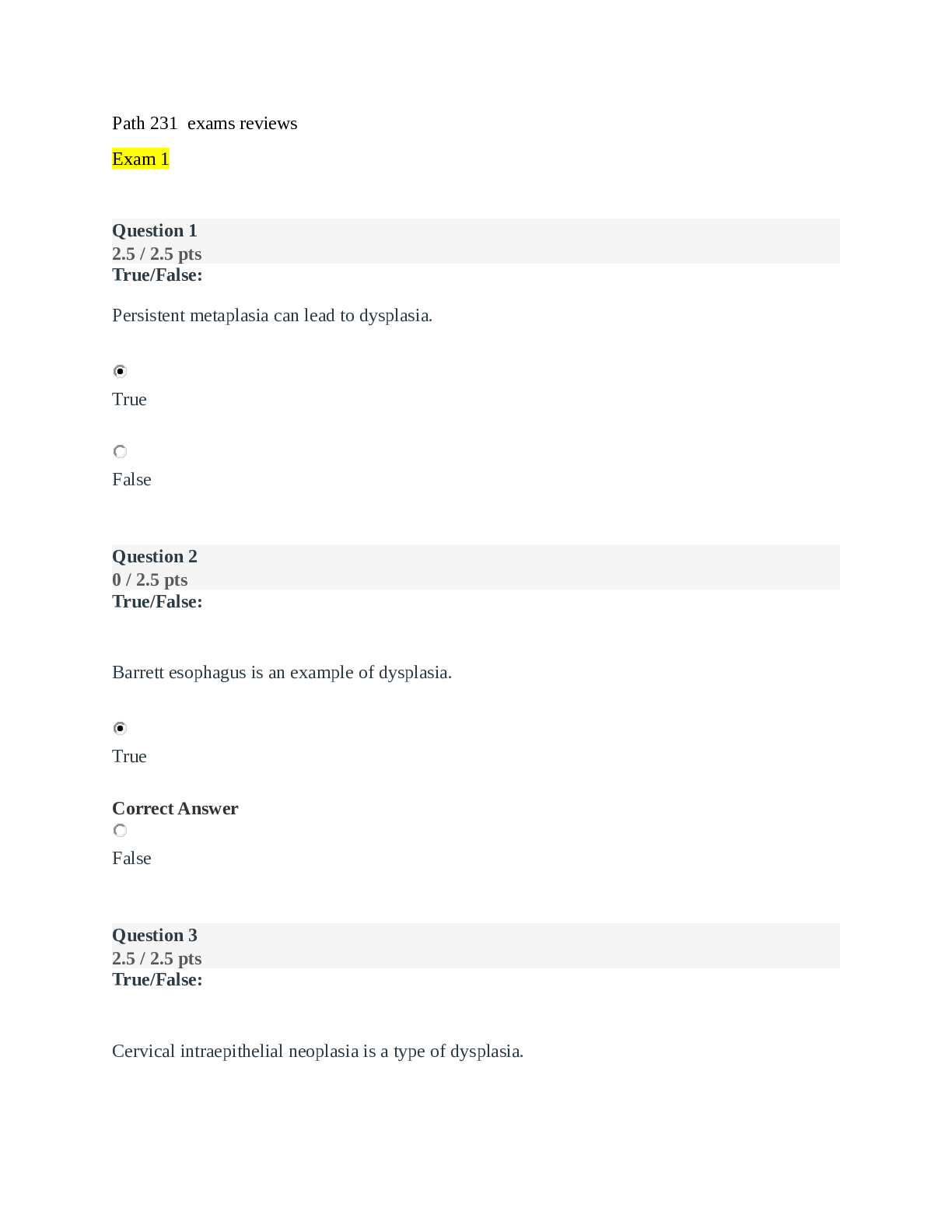
Reviews( 0 )
Document information
Connected school, study & course
About the document
Uploaded On
Oct 16, 2021
Number of pages
109
Written in
Additional information
This document has been written for:
Uploaded
Oct 16, 2021
Downloads
0
Views
361

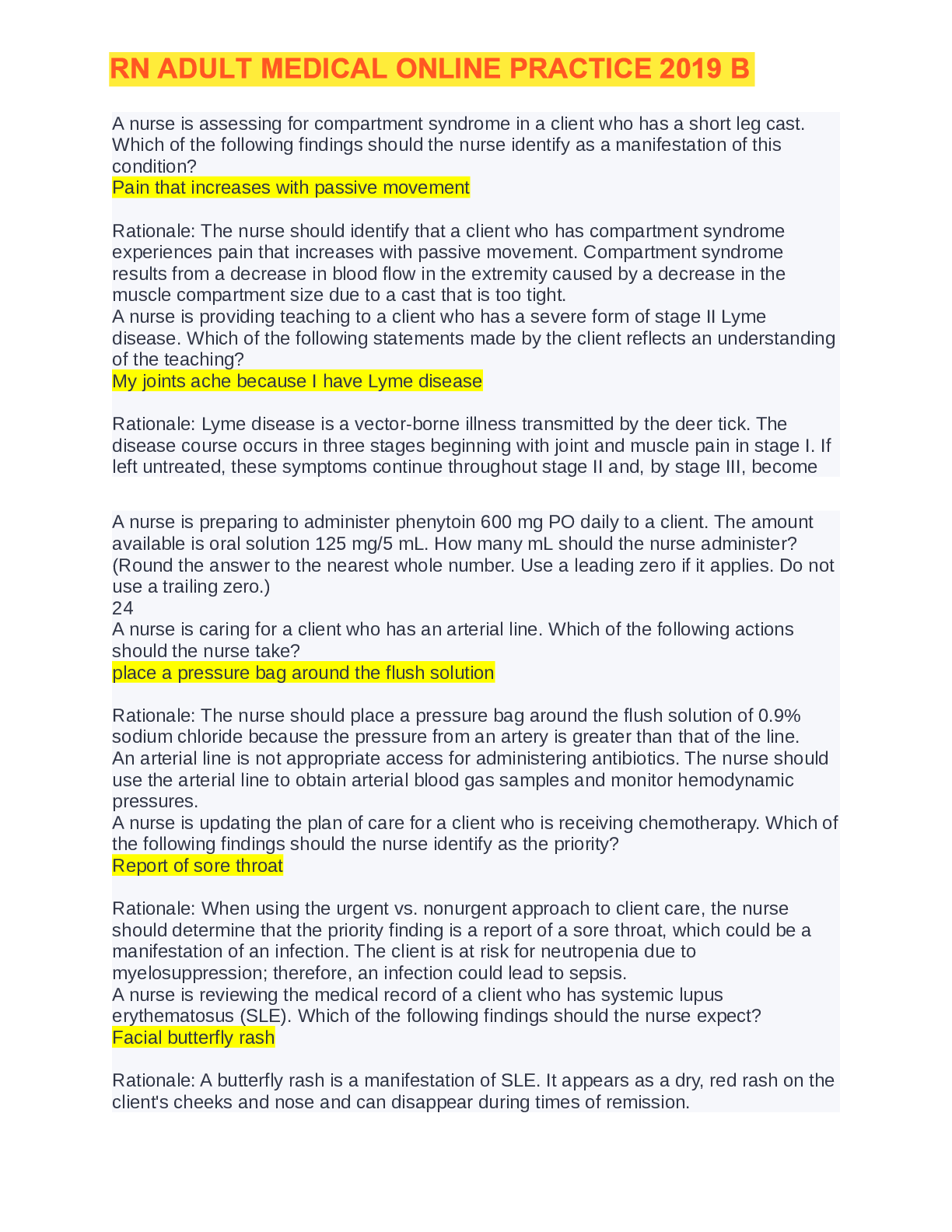








; Answered.png)

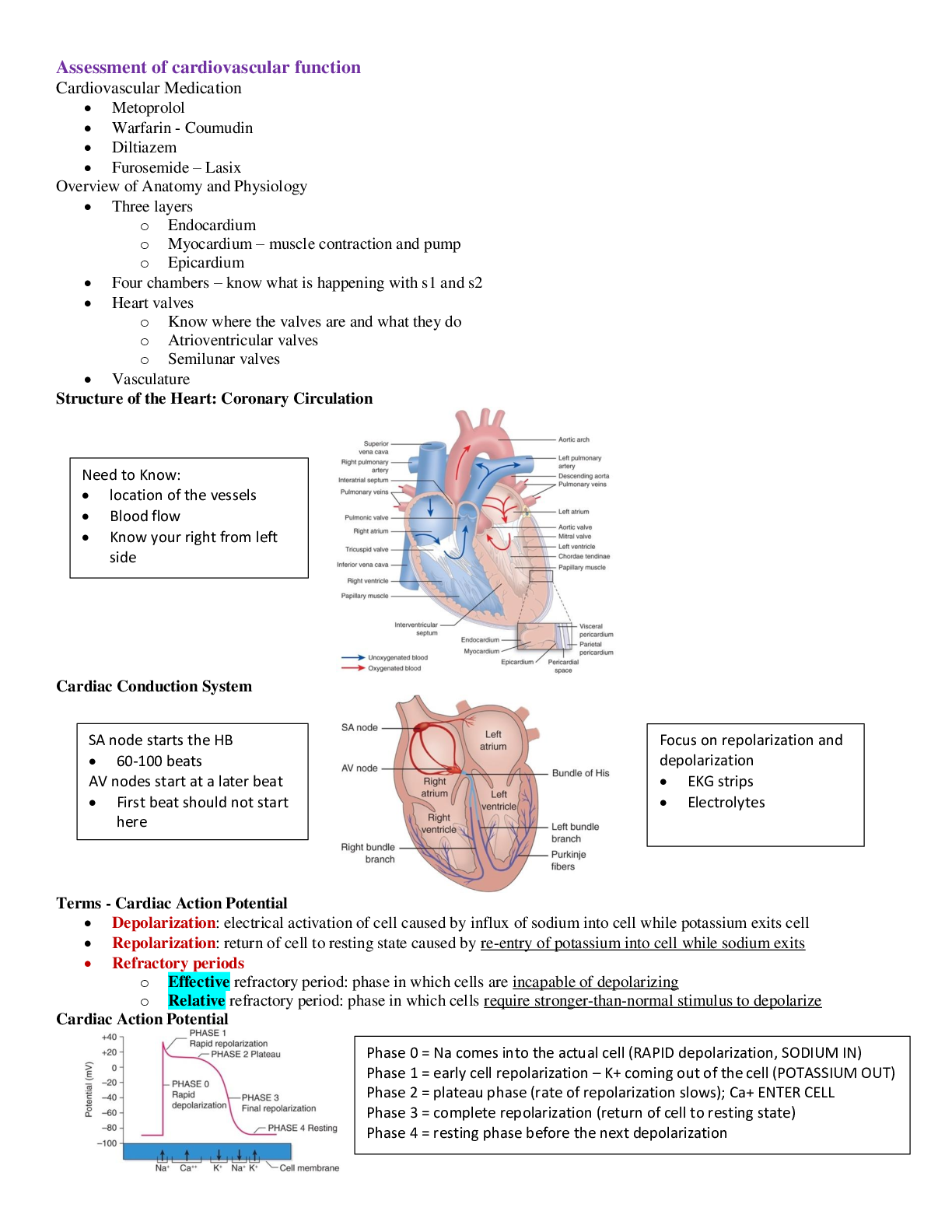
COMPLETE SOLUTION KAPLAN UNIVERSITY.png)
